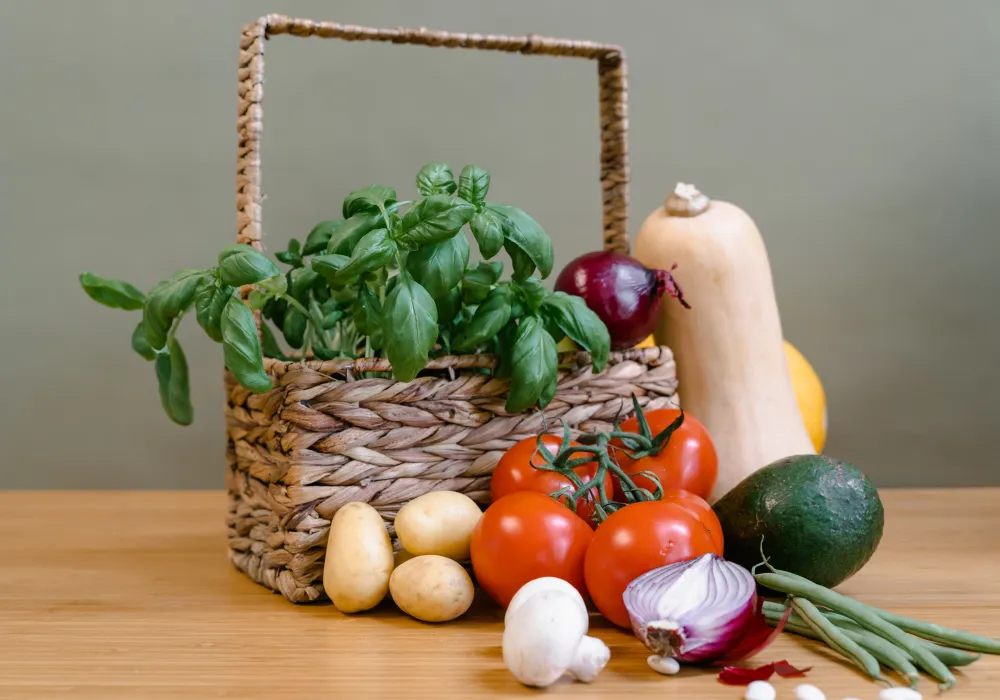Collagen to Fight Signs of Aging and How to Get It From Your Diet

Collagen is in the news and being studied for its benefits to the body. What is collagen, it is the most abundant protein in your body. It is the main component of connective tissues that make up tendons, ligaments skin, and muscles. It not only provides your skin with its structure but also impacts its youthful suppleness. Promising studies show that people who consume collagen supplements had higher skin elasticity in 5 weeks as well as a reduction in fine lines and wrinkles. If that’s not enough incentive to get more, collagen helps improve skin hydration and elasticity which keeps your skin looking younger and healthier for longer. The benefits of collagen are not just superficial either. Consider that collagen helps reduce joint pain, increase muscle mass and improve digestion. Daily collagen supplements can even impact your bones making them stronger, and less brittle enabling your body to make new bone cells. Collagen supplements are a great way to get more, maybe adding it to your morning smoothie or afternoon pick-me-up. There are 28 types of collagen, but the most common is type 1 found in connective tissue. Type 2 is found in joints and intervertebral discs, type 3 is found in the fibers of skin and blood vessels, and type 4 resides in the kidney's inner ear and eyes. Collagen may help prevent bone loss as your bones are mostly collagen and help you avoid osteoporosis and weakening of your bones. It is also protective of your bone’s cartilage or the rubber around your joints. Studies show that increasing collagen intake can be protective of cartilage and helpful in reducing joint pain and swelling. So how do we get more collagen in our diets to support a youthful glow and healthful aging? You can get the collagen you need from the foods you eat or you can try a high-quality collagen supplement. Look for hydrolyzed collagen as it is easier for the body to break down and utilize. Keep reading to find out what are the best sources of collagen in the foods we eat.
Bone Broth
My personal favorite, bone broth is a superfood. Think of your Grandma’s chicken soup, simmering for hours on the stove, rich and hearty and healing to body and soul. Nobody opened a can of soup back in the day but used a chicken carcass simmering for up to 48 hours with vinegar, salt, and water to extract the minerals and the gelatinous material from the bones. The final product strained will make an amazing stock for recipes and broth for soups or consuming collagen. The bones and connective tissues are loaded with magnesium, phosphorous, Glucosamine, Chondroitin, amino acids, and collagen. This is a very cost-effective way to use bones from a chicken replacing expensive supplements. Bone broth delivers a bioavailable form of collagen that your body can easily process making it far superior to supplements.
Connective Tissues
Animal sources such as the skin of chicken, pork beef, and fish are high in collagen. We have been programmed not to eat the skin and many of our meat sources come with the skin already removed. Although you may be avoiding it due to other health concerns, consider an occasional piece of baked chicken with the skin on to give yourself an easy collagen boost for your skin and connective tissues.
Fish

Fish is one of the best sources of Omega 3 fatty acids, an essential nutrient for skin as well as combatting inflammation. This nutrient is important for supporting the structure of the skin specifically the membrane that surrounds the skin cells. Salmon tops the list as one of the best sources of Omega 3s. Steer away from farm raised and opt for wild-caught to get the most bang for your buck. This may not be the most budget-friendly way to get Omega 3s so consider some less popular, cheaper sources. Canned and pickled fish such as mackerel, sardines, and herring can be a great way to supplement and keep the costs down. You can buy fresh at your local seafood counter and prepare it yourself. Keep it simple by adding olive oil, fresh herbs, and sea salt. Canned fish is a great convenience food for a grab-and-go or to add to a salad. Make a tasty fish spread to eat on crackers or a sandwich as a healthy snack or light meal.
Red Fruits and Vegetables

An unlikely addition to the list, red vegetables are a natural skin protectant as well as a collagen booster. Specifically, the compound lycopene, found in red fruits and vegetables has been found to enhance skin health by boosting collagen. Add foods like strawberries, peppers, watermelon, tomatoes, and grapefruits to your diet for added protection. Also high in vitamin C, these foods add an additional skin boost as it aids in actual collagen synthesis and production.
Green Vegetables
Dark green vegetables while not a direct source of collagen, are also high in vitamin C and antioxidants. These substances are needed to support the body to produce more collagen. Fresh sources are always best, and second, choose freshly frozen. Eat more fresh veggies such as kale, spinach, and swiss chard to enhance your skin, bones, and connective tissues and get your glow on!
As always check with your doctor or trusted healthcare professional before taking any new supplements or changing your diet or exercise routine.